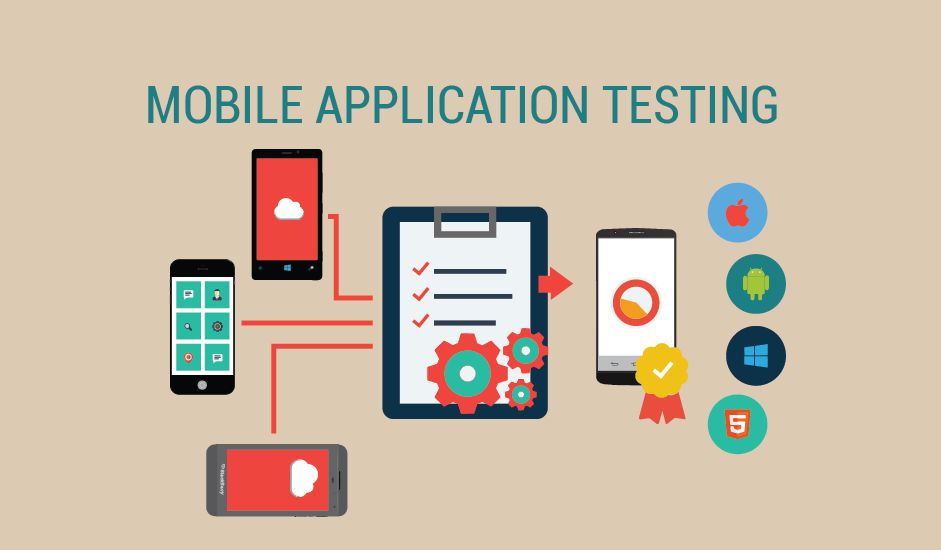This article examines different types of testing mobile apps that will benefit testers, developers, and customers in the long run.
Each application should work well on a wide variety of devices and operating systems. To make sure the app works flawlessly, schedule and perform mobile testing accurately and thoroughly. Mobile testing is an essential part of all software testing cycles.
Table of Contents
Ten types of tests and approaches for mobile applications:
Functional testing:
This form of mobile testing tries to make sure that the functions of an application are working correctly. It focuses on testing the application’s user flows and the features that make up each user flow. Remember, “Only 4 in 100 dissatisfied consumers will complain directly to a business – the other 96 will opt out without commenting. Customers expect every program to work flawlessly. If users find a bug, they will usually remove the software without hesitation.
In addition to testing the functionality, the following scenarios should also be consider:
The application will be installed and started correctly
Users can register and log in without any hassle
Text boxes and buttons work perfectly.
Notifications sent via push are displayed accurately.
Usability testing:
Usability tests guarantee and verify the application’s usability in terms of usability and intuitiveness. Since the success of an app is determines by the attractiveness of the end-to-end user experience, it is best to conduct usability tests with real customers on real devices. This type of test is the most effective way of determining target-audience preferences. On the other hand, professional testers can run user scenarios that are very similar to the behaviour of actual end-users.
Engineers, marketing specialists, and product managers want to test whether the consistently “application-oriented” experience is world-class. For this purpose, app usability tests must be performed with real people on real devices to identify and fix usability issues before the app is quickly released.
In addition to the suitability test, the following aspects should also be taken into account:
- Good layout and design
- Intuitive
- reaction time
Usability tests are subjective, and you need to understand your target end-users and their preferences.
Compatibility Tests:
Compatibility tests are an essential type of non-functional tests to ensure that your mobile application is compatible with different operating systems, devices and applications, network environments, and internal hardware specifications.
When testing compatibility, keep the following points in mind:
The application is well-suited with different operating systems and versions (iOS, Android, Windows, etc.)
The application works efficiently with different networks and parameters (bandwidth, operating speed, etc.)
The app works with a wide variety of browsers (Google, Firefox, Safari, etc.)
The software works on a wide variety of devices (screen size, data storage, etc.)
There are two different types of compatibility tests that need to be consider:
- Test the operation of a mobile application with previous software versions.
- Testing the functionality of mobile applications with new versions of software, including beta versions, is progress.
Performance and load testing:
You need to make sure that the application performs optimally under different workloads. So, To ensure this, performance tests are essential. In addition, avoiding malfunctions is a vital point to consider.
The performance test must ensure that:
- Device performance: Boot time, battery usage, and memory usage are factors to consider when evaluating a device’s performance.
- Network performance: Inaccuracies or interruptions in receiving information
- API and server performance: what is the speed and format of the data transfer?
Additionally, your application should have built-in backup and restore features that save or restore user data that users may lose due to various factors.
Security Testing:
Data security has become a crucial task in this digital world. All data is now accessible to hackers. An observation in this context is that 80% of users uninstall an app due to security threats. You must therefore understand and comply with the security tests.
Some applications request personal information from users. In this case, you must guarantee the confidentiality, authenticity, and integrity of the request at all times. To do this, be sure to prioritize data security in your QA testing and the behaviour of your application under multiple device authorization schemes.
Installation testing:
Installation tests determine whether the mobile app is installed, uninstalled, and updated without problems. Once installed, it works as expected. It also checks what the scenarios are in case a user is unable to update the app.
Localization Testing:
This type of test is used to determine whether a particular region’s official linguistic and cultural characteristics consider when adapting a product to that region.
Here are some of the important aspects that need to be adjust:
Use the correct time zone formats for the date and time, including numeric formats
Currency used in the region
User interface and text
Must meet local regulatory requirements
The primary purpose of site testing is to make them feel like they create specifically for them. Therefore, After completing the test, make sure that the app functions are working correctly.
Regression tests and reliability tests:
This test ensures that existing functions are not affected by a code change. The new code does not affect the previous working version of the application. If you add new functionality, fix a bug, or tweak code, the application may stop working correctly. This issue involves retesting entire sections of the application, which can be accomplish by re-running any previous tests that may take some time or prioritize features based on their business impact and frequency. Useful.
Therefore, Reliability tests ensure that the program is reliable. However, The program must meet the specified period in the specified environment that warrants its creation. An application should produce similar results for the same test over time, or multiple versions of the same test should produce similar products that are reliable. Load tests and regression tests are two tests that are done to check reliability.
Manual Testing vs Automated Testing:
Mobile application testing is a complex process that needs different methods and skills. Quality assurance teams use manual testing to ensure the end product performs as expected. However, Manual testing examines use cases that may not be immediately apparent – skill human testers working at short intervals to rave about the program can produce exceptional results.
Therefore, As we’ve already stated, manual testing is preferable in some circumstances. On the other hand, some QA tests are either too tedious or too complicate for human testers to complete. As a result, well-executed automated testing, in addition to manual testing, can assist ensure quality and expedite the introduction of improved products.
Mobile device testing:
Without hardware and operating systems, there would be no mobile apps. Therefore, we need to consider testing mobile devices to ensure the quality of software and hardware.
There are several forms of mobile device testing, including:
- Interrupt testing – The interrupt test determines how an application reacts to interrupts and whether or not it should be restores to its previous state. Loss of battery life, an incoming call or text message, notifications, and app upgrades are examples of common mobile app disruptions.
- Location-Based Services (LBS) – Location-based services use geographic data from a mobile device to provide real-time information, entertainment, or security. Consumers also use them to “check-in” while doing things on the go, like going to a local Starbucks or a concert.
- Biometric testing – face recognition, fingerprint and hand geometry, iris recognition, and even DNA or insulin levels are standard biometric sensors in mobile devices.
- Testing NFC payments – Near Field Communications (NFC) enables contactless payments by allowing mobile devices to communicate with payment terminals.
Therefore, there is no entity as a perfect application. And expecting a bug-free program is impractical. However, you can reduce the size and severity of the problem by thoroughly testing the application within the allotted time. So, to ensure its usability and make it a successful version, it is imperative to include the above test types in your test plan.
ALSO READ: Four Best Practices For Developing Secure Software
- Drones: Basic Uses, Information, Features & More – 2024 - April 9, 2024
- When to Use Asymmetric vs Symmetric Encryption - April 8, 2024
- 7 Key Benefits of opting .NET for Web Development in 2024 - April 6, 2024




Leave a Reply